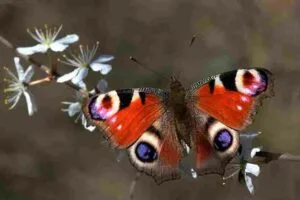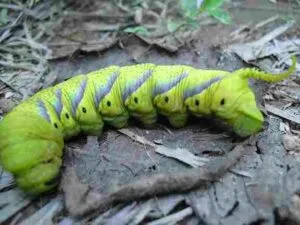Insects are the most diverse group of organisms in the world. More than 500 thousand kinds of insects are found. Let us discuss some types of insects and its related facts.
- Bees
- Beetles
- Butterflies
- Moths
- Bugs
- Flies
- Caterpillars
- Lice and termites
- Ants
- Wasps
- Silverfish
- Grasshoppers, locusts and
- Crickets
Bees
Bees possess warning colours on their body with a stinger at the posterior end which is used for defence. They have two pairs of wings which make them fly. Bumblebees and honeybees are quite larger and have hairs on their body. Examples: Mining bees, Carpenter bees, Euglossine bees, Leaf-cutter bees etc.
Beetles
Beetles have a strong shell and hard forewings called elytra covered in wing cases. They also have mandibles and chewing mouthparts. Their larvae are used by some organisms as a great source of protein. Example: Flea beetles, Colorado potato beetles, Blister beetles, Borer beetles, Com-clawed beetles, etc.
Butterflies

Butterflies have two-paired large wings which are brightly coloured, soft and delicate covered with tiny scales. They have thin antennae and can feed through proboscis. Examples: Brush-footed butterflies, Blue butterflies, Copper butterflies, Zebra-swallow tail butterflies, Monarch butterflies etc.
Moths
Moths typically have four separate life stages: egg, larvae or nymph, pupa and adult. They are a great example of industrialization adaptations. They are small in size and are nocturnal. Examples are Bagworm moths, Spongy moths, Hawk moths, Forester moths, Carpenter moths etc.
Bugs
Bugs are also known as true bugs and are categorised under the order Hemiptera, formerly called Heteroptera. They have half-wings and are thin membranous which are ‘V-shaped. They undergo incomplete metamorphism. They have piercing-sucker type of mouthparts. Examples: Bed bugs, Plant bugs, Bat bugs, Lace bugs, Flower bugs, Ambush bugs, Red bugs etc.
Flies
Flies belong to the order Diptera and have only two wings. They are major detrivores as they get their nutrition from rotting sources and are hugely important as flower pollinators. They have sucking, piercing and spongy mouthparts. Examples: House flies, Mosquitoes, Dung flies, Fruit flies, Horse flies, Marsh flies, Crane flies, Fireflies etc.
Caterpillars

Caterpillars are immature butterflies or moths. Caterpillars have six true legs and one pair of false legs known as prolegs. Silkworms are one of the important members of this group as they are highly used to produce silks on a large scale. They are colourful in their larval stage and then converts into an adult. Example: Silkworm moths, Caterpillar moths, Yucca moths etc.
Lice and Termites
Lice and termites have wings at their reproductive stage but cannot fly as an adult so they are crawling insects. They are parasitic and can destroy the wood structures and house furnishing as they feed upon cellulose, paper, dung and human blood. They have two pair of legs which provides a strong attachment with the surface adhering. Example: Booklice, Hair lice and Woodlice.
Ants
Ants are invasive insects and like to form queue and colonies. They do not have wings and bent antennae. Their bite gives you needle-like pain with bumps and rashes on the skin. They have a distinct waist in between the thoracic-abdominal region. Example: Driver ants, Fire ants, Honey ants, Sahara-desert ants etc.
Wasps
Wasps possess compound eyes for vision and also have wings to fly. They are also very useful for pollination but not more than 7 feet above. They may carry some deadly components in their saliva which may cause some allergic reactions to living organisms.
Silverfish
Silverfish are flexible having a wavy and silvery appearance like fish. They are present in old books and papers because they feed upon papers and cellulose as they possess cellulase as a major secretion. They are devoid of wings with long antennae.
Grasshoppers and locusts
Grasshoppers and locusts are jumping insects and are mostly green in colour. They are usually large and produce foul odour from their body and are mostly herbivores. Locusts can damage crop fields. Examples: Cone-headed grasshoppers, Short-horned grasshoppers, Leaf-rolling grasshoppers, Swamp locusts etc.
Crickets
As per the estimates, over 10 quintillion insects are alive with which crickets being one of them. Crickets are nocturnal with a very small life span. They make buzzing sounds to create an echo for navigation during the night. Example: Raspy crickets, Mole crickets etc.
Conclusion
Insects are grouped as flying insects, jumping insects and crawling insects. Some are useful for human beings; some are detrimental to living beings while few are bioluminescent as they glow in dark. Insects show great diversity throughout the Kingdom Animalia.
Read more about Trilobite.
Also Read:
- Examples of extremophiles
- Denitrifying bacteria examples
- Is adenine used in dna replication
- Native species examples
- Examples of endoparasites
- Hypogynous flower example
- Do eukaryotes have introns
- Purine metabolism importance in human physiology
- Fungi cell wall and bacteria cell wall
- Do eukaryotes have endoplasmic reticulum

Hi….I am Anushree Verma, I have completed my Master’s in Biotechnology. I am a very confident, dedicated and enthusiastic author from the biotechnology field. I have a good understanding of life sciences and great command over communication skills. I thrive to learn new things every day. I would like to thank this esteemed organization for giving me such a great opportunity.
Let’s connect through LinkedIn- https://www.linkedin.com/in/anushree-verma-066ba7153